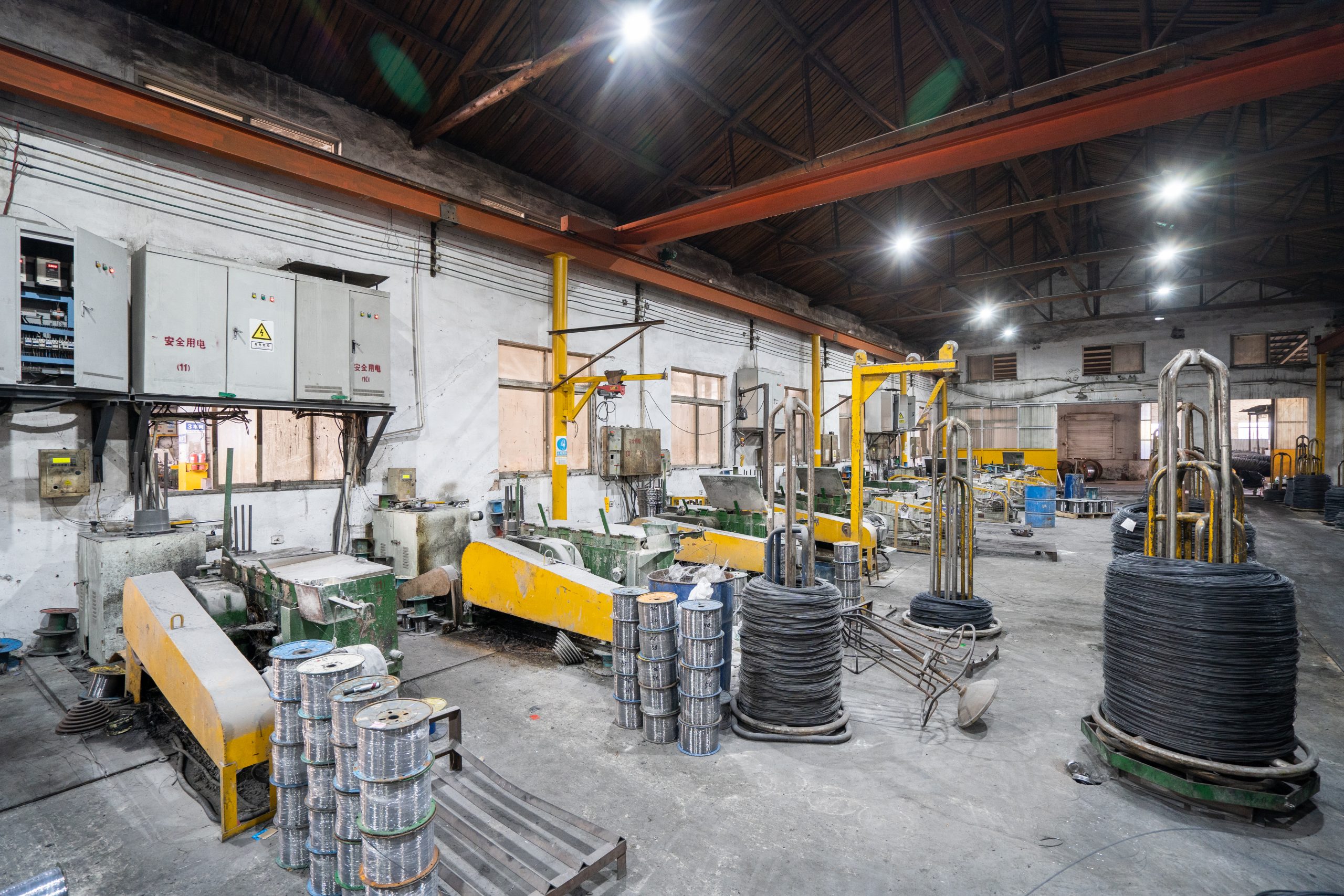Table of Contents
เบ็ดตกปลาเป็นเครื่องมือสำคัญสำหรับนักตกปลาทั่วโลก อุปกรณ์ชิ้นเล็ก ๆ แต่สำคัญเหล่านี้คือสิ่งที่ช่วยให้ชาวประมงจับปลาและนำเข้าได้ แต่คุณเคยสงสัยหรือไม่ว่าการทำเบ็ดปลาเกิดขึ้นได้อย่างไร? ในบทความนี้ เราจะสำรวจกระบวนการสร้างเบ็ดตกปลา ตั้งแต่วัสดุที่ใช้ไปจนถึงเทคนิคการผลิตที่ซับซ้อน
ขั้นตอนแรกในการทำเบ็ดตกปลาคือการเลือกวัสดุที่เหมาะสม เบ็ดตกปลาส่วนใหญ่ทำจากลวดเหล็กคุณภาพสูงซึ่งขึ้นชื่อในเรื่องความแข็งแรงและความทนทาน โดยทั่วไปแล้วลวดจะทำจากเหล็กและคาร์บอนผสมกัน ซึ่งทำให้มีคุณสมบัติที่จำเป็นในการทนต่อแรงกดและแรงดึงในการจับปลา เมื่อเลือกลวดได้แล้ว ก็จะตัดเป็นตะขอตามความยาวที่ต้องการ
หลังจากตัดลวดแล้ว ก็จะมีรูปร่างเป็นตะขอที่คุ้นเคยซึ่งเราทุกคนต่างรู้จัก ซึ่งทำได้โดยใช้ความร้อนและแรงกดร่วมกันเพื่อดัดลวดให้อยู่ในรูปแบบที่ถูกต้อง จากนั้นจึงลับเบ็ดโดยใช้ล้อเจียรเพื่อให้แน่ใจว่าจะแทงทะลุปากปลาได้อย่างง่ายดาย
เมื่อตะขอมีรูปร่างและลับคมแล้ว ก็ถึงเวลาเพิ่มหนาม หนามคือส่วนที่ยื่นออกมาเล็กๆ บนตะขอเพื่อป้องกันไม่ให้ปลาหลุดออกไปเมื่อถูกจับได้ ซึ่งทำได้โดยการตัดรอยบากเล็กๆ เข้าไปในเส้นลวด แล้วงอกลับไปทางก้านของตะขอ จากนั้นลับหนามเพื่อให้แน่ใจว่าสามารถเจาะเนื้อปลาได้
หลังจากเพิ่มหนามแล้ว ตะขอจะถูกเคลือบด้วยสารป้องกันเพื่อป้องกันสนิมและการกัดกร่อน โดยทั่วไปจะทำโดยใช้กระบวนการที่เรียกว่าการชุบด้วยไฟฟ้า โดยที่ตะขอจะจมอยู่ในสารละลายของไอออนของโลหะ จากนั้นจึงปล่อยกระแสไฟฟ้า สิ่งนี้ทำให้ไอออนของโลหะเกาะติดกับพื้นผิวของเบ็ด ทำให้เกิดความคงทนและใช้งานได้ยาวนาน
นอกเหนือจากเบ็ดตกปลาแบบดั้งเดิมแล้ว ยังมีตะขอแบบพิเศษที่ใช้สำหรับการตกปลาบางประเภทอีกด้วย ตัวอย่างเช่น ตะขอวงกลมได้รับการออกแบบมาให้เกี่ยวปลาไว้ที่มุมปาก ซึ่งช่วยลดความเสี่ยงของการเกี่ยวไส้และเพิ่มโอกาสที่จะจับปลาได้สำเร็จ โดยทั่วไปตะขอเหล่านี้จะทำโดยใช้กระบวนการเดียวกับตะขอตกปลาแบบดั้งเดิม แต่มีการปรับเปลี่ยนรูปร่างและการออกแบบเล็กน้อย
ตะขออีกประเภทหนึ่งที่นิยมใช้ในการตกปลาคือปมเชือกลวด นอตลวดสลิงใช้ในการติดตะขอเข้ากับสายเบ็ด ทำให้เกิดการเชื่อมต่อที่ปลอดภัยซึ่งสามารถทนต่อแรงกดจากการเหวี่ยงปลาได้ โดยทั่วไปแล้ว ปมเหล่านี้จะทำโดยใช้เทคนิคการบิดและการทอรวมกันเพื่อสร้างการเชื่อมต่อที่แข็งแกร่งและเชื่อถือได้
โดยสรุป เบ็ดตกปลาเป็นเครื่องมือสำคัญสำหรับนักตกปลาทั่วโลก และกระบวนการสร้างเบ็ดถือเป็นการผสมผสานศิลปะที่น่าหลงใหล และวิทยาศาสตร์ ตั้งแต่การเลือกวัสดุที่เหมาะสมไปจนถึงการปรับรูปร่างและการลับตะขอ แต่ละขั้นตอนในกระบวนการผลิตมีความสำคัญต่อการสร้างผลิตภัณฑ์คุณภาพสูง ไม่ว่าคุณจะเป็นนักตกปลาผู้ช่ำชองหรือเพิ่งเริ่มต้น การทำความเข้าใจวิธีทำเบ็ดตกปลาจะทำให้คุณรู้สึกซาบซึ้งในทักษะและฝีมือที่สร้างสรรค์เครื่องมือที่จำเป็นเหล่านี้มากขึ้น
Fish Hooks are an essential tool for anglers around the world. These small but crucial pieces of equipment are what allow fishermen to catch fish and bring them in. But have you ever wondered how fish hooks are made? In this article, we will explore the process of creating fish hooks, from the materials used to the intricate manufacturing techniques involved.
The first step in making a fish hook is selecting the right material. Most fish hooks are made from high-quality steel wire, which is known for its strength and durability. The wire is typically made from a combination of Iron and carbon, which gives it the necessary properties to withstand the pressure and tension of catching fish. Once the wire is selected, it is then cut into the desired length for the hook.
After the wire is cut, it is shaped into the familiar hook shape that we all recognize. This is done using a combination of heat and pressure to bend the wire into the correct form. The hook is then sharpened using a grinding wheel to ensure that it is able to pierce through the fish’s mouth easily.
Once the hook is shaped and sharpened, it is time to add the barb. The barb is the small protrusion on the hook that prevents the fish from escaping once it has been caught. This is done by cutting a small notch into the wire and then bending it back towards the shank of the hook. The barb is then sharpened to ensure that it is able to penetrate the fish’s flesh.
After the barb is added, the hook is then coated with a protective finish to prevent rust and corrosion. This is typically done using a process called electroplating, where the hook is submerged in a solution of metal ions and then subjected to an electric current. This causes the metal ions to bond to the surface of the hook, creating a durable and long-lasting finish.
In addition to traditional fish hooks, there are also specialized hooks that are used for specific types of Fishing. For example, circle hooks are designed to hook the fish in the corner of the mouth, reducing the risk of gut hooking and increasing the chances of a successful catch. These hooks are typically made using the same process as traditional fish hooks but with slight modifications to the shape and design.
Another type of hook that is commonly used in fishing is the wire Rope knot. Wire rope knots are used to attach the hook to the fishing line, providing a secure connection that can withstand the pressure of reeling in a fish. These knots are typically made using a combination of twisting and weaving techniques to create a strong and reliable connection.
In conclusion, fish hooks are a crucial tool for anglers around the world, and the process of making them is a fascinating blend of art and science. From selecting the right materials to shaping and sharpening the hook, each step in the manufacturing process is essential to creating a high-quality product. Whether you are a seasoned angler or just starting out, understanding how fish hooks are made can give you a greater appreciation for the skill and craftsmanship that goes into creating these essential tools.


